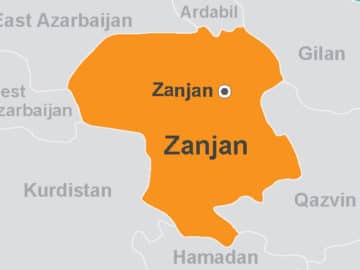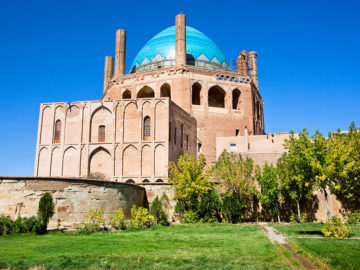Sultanieh is one of the cities of Zanjan Province known for an edifice called Sultanieh Dome. The city was constructed by the Ilkhanid Kings, who were the descendants of Mongols. Before Sultanieh was made, there was another city in this location named Aribad. When the Mongols came to Iran, they aimed to stay and make a kingdom. They first chose Tabriz as their capital, but found the vast plains of Zanjan irresistible, and made it their hunting area. When Arghun, the fourth Ilkhan came to throne, he decided to make a city in this area. He ordered the construction of 12 thousand feet of wall to surround the city. He died before the completion, and his son left Sultanieh for Tabriz; the constructions were abandoned.

The city is in its prime when Uljeito becomes the king, and comes to the city to resume the unfinished orders of his ancestor. In order to do so, he forcefully moved many artists, architects, craftsman, and tradesman to Sultanieh. He decided to increase the walled borders of the city from 12 thousand feet to 30 thousand feet, and ordered the construction of the Sultanieh dome. The edifice is the third biggest dome of the world after Santa Maria Del Fiore of Florence, and Hagia Sofia of Istanbul. There are couples of theories as to why the building was made. It is mentioned that it was to be used as a Shrine for Shiite Imams, Ali and Hussain that was prevented by the clerics of Iraq since exhumation is forbidden in Islam. It is also believed that the mausoleum was made for Uljeito. Interestingly though, there are no graves in the building.
Uljeito ordered the most powerful of courtiers to choose a section of a city and make a neighborhood under their mane. Khajeh Rashid Al Din Fazl Allah and Chalabi Uqlo, the high ranking courtiers and scholars, each made a section of city with different private and public constructs. The Chalabi Uqlo mausoleum and school was made in this time. When Uljeito died, all those who were obliged to move and live in Sultanieh leaved the place. Sultanieh slowly lost its importance and with the Timurid attack the city got almost destroyed. Miranshah, in particular, was very hostile. He destroyed many constructs; it’s a miracle that couple of constructs survived.
In Safavid time, the city has already lost its place, but it was still one of the main resting areas of the kings that went from Tabriz to their hunting or summer/winter palaces. Although it was frequently visited, not much is remained from the Safavid time beside a mausoleum said to belong to Molla Hassan Kashi.
When Qajar came to throne, the Iran – Russia wars took place, and the king’s successive bad decisions caused drastic damages to the city. It is in this time that the Jameh Mosque of the city, that was the biggest building after Sultanieh Dome, is completely destroyed. With registration of Sultanieh Dome as a UNESCO world heritage, the city gains a tourism aspect, and as a result other attractions of the city come to attention as well. Today, city of Sultanieh is one of the most visited cities of Iran.


